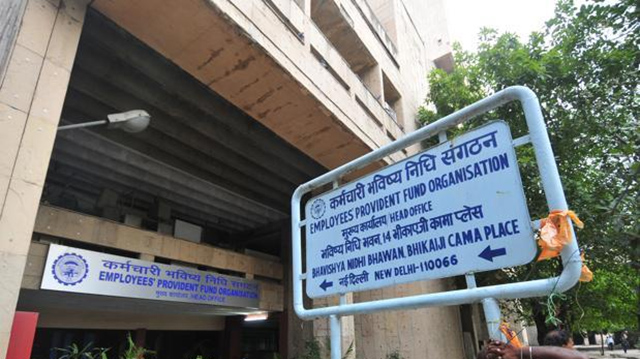To combat the issue of employees post-retirement social and economical security, the government of India framed the Employees' Provident Funds & Miscellaneous Provisions Act, 1952. The act covers EPF and pension scheme for both private and public sector employees. The same is under control of The Employees' Provident Fund Organization which again administered by Ministry of Labor and Employment. Let’s discuss the various aspects of this scheme.
What actually covered under EPF scheme?

EPF act includes 3 statutory compliance schemes:
- Employees' Provident Fund Scheme, 1952
- Employees' Deposit Linked Insurance Scheme, 1976
- Employees' Pension Scheme, 1995 (replacing the Employees' Family Pension Scheme, 1971)
Under this scheme, when an employee joins the organization, it is employee’s duty to get his/her registered under this scheme. But, prior to that, the employer must be an EPFO registered company which becomes compulsory after the number of employees exceeds 20 in any company.
How does this scheme work?
After registration, both the employer and employee have to contribute towards the EPF Fund as per below-mentioned breakup: 12% of the employee’s basic salary directly goes towards the EPF And Employers contribution gets divided into:
- 3.67% goes towards EPF (Employees' Provident Fund)
- 8.33% goes towards EPS (Employees' Pension Fund)
- Name and address of the establishment
- 0.5% goes towards contribution for EDLI (Employees' Deposit Linked Insurance scheme)
- 0.65% goes towards contribution for EPF administration charges
- 0.01% goes towards contribution for EDLI administration charges
Now there is a condition, for the employees drawing a basic salary below Rs. 15000/- per month, it becomes mandatory for both employer and employee to contribute towards the fund but in case the basic salary exceeds this limit, making a contribution can be the choice for both Employer & Employee
After all these, the most important part is PF Withdrawal. So, after making the contribution for years, how can this money can be withdrawal? Let’s have a look.
Easy withdrawal of PF amount

Nowadays, most of the financial transactions have been made online. Now EPF members need not visit physically to their ex-employer or EPFO office for their settlement. There have been several amendments made introduced in adherence to this act for making it simple. The online facility is one of them.
As per the latest EPFO notification, the EPF can be claimed under 3 categories which are:
- Full Withdrawal via PF Final Settlement,
- PF Partial Withdrawal via loan/advance and
- Pension Withdrawal Benefit through EPS withdrawal,
All these 3 can be made directly through employees UAN number. This number is being provided by the EPFO office at the time of registration and it should be linked with Aaadhar by providing KYC documents. If all these are in place then withdrawal is a very faster. Steps for online Withdrawal of EPF & EPS Balance:
- Step 1 - Log on to UAN portal and enter required details.
- Step 2 - Check the KYC details.
- Step 3 - Select the claim criteria for which you would like to apply out of 3
- Step 4 – Finally, verify online PF claim by using One Time Password (OTP) which will be sent on your UAN linked mobile number. EPFO after obtaining your Aadhaar details will process your online PF claim and your bank account will be credited with the claimed amount.
PF amount is not just a saving instrument rather it is a future security fund which gets accumulated up to the year if you leave it untouched, and finally, give you a good amount after retirement. It is actually of great help in your old age and one of the best interest rate giving scheme with a rate of more than 8.5% annually. Also, if the amount will be withdrawn after completion of 5 years of PF account opening, the capital plus interest is completely tax-free. Thus, keeping all these benefits in mind, immature withdrawal is not a wise decision. Rather it should be transferred. Even if the withdrawal rules have become easy for PF, it is advisable not to withdraw early, the reasons cited below:
- PF is meant for your retirement corpus and ideally, it should not be touched prior to retirement. It is essential for making old age life comfortable and stress-free
- Also, in case of early withdrawal, the total interest amount attracts tax otherwise it is tax-free under section 80C.
- As the PF account can easily transfer to the new company in case of the job switch, withdrawal actually against the law if you are employed.
More about Provident Fund amount

Voluntary Provident Fund
An employee can intentionally pay the higher amount for PF over the statutory rate of 12 percent. This is called commitment towards Voluntary Provident Fund (VPF) which is represented independently. This VPF likewise wins tax-exempt intrigue. In any case, the business does not need to match such willful commitment.
This VPF also earns tax-free interest. However, the employer does not have to match such voluntary contribution.
Partial withdrawal in special circumstances

The partial amount can also be withdrawn in case of purchasing or building a house or purchasing a plot and even for house renovation. The progress can likewise be taken for reimbursement of the extraordinary home advance, for self or relative's therapeutic treatment, for the marriage of self/little girl/child/sibling/sister.
Why should you not leave the PF account unattended?

After leaving the job, you should get your PF account settled immediately otherwise you may face difficulty if try to withdraw after a longer period.
Also, you should be always attentive that whether your account has been transferred to the new employer or not. And also getting the PF account number after registration, so that in future you should not face any problem.
